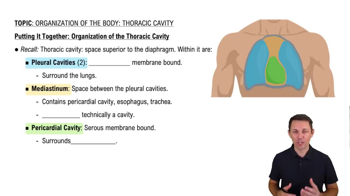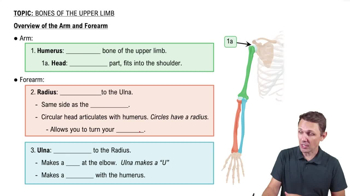Here are the essential concepts you must grasp in order to answer the question correctly.
Glenoid Cavity
The glenoid cavity is a shallow, cup-like structure located on the lateral aspect of the scapula. It serves as the socket for the shoulder joint, allowing for a wide range of motion. The articulation between the glenoid cavity and the proximal end of the humerus forms the glenohumeral joint, which is crucial for upper limb mobility.
Recommended video:
Organization of the Thoracic Cavity
Scapula Anatomy
The scapula, or shoulder blade, is a flat, triangular bone that connects the humerus with the clavicle. It plays a vital role in shoulder stability and movement. Understanding the anatomy of the scapula, including its various features like the acromion and coracoid process, is essential for comprehending how it interacts with other bones in the shoulder girdle.
Recommended video:
Humerus
The humerus is the long bone of the upper arm, extending from the shoulder to the elbow. Its proximal end features a rounded head that fits into the glenoid cavity of the scapula, forming the shoulder joint. This bone is critical for arm movement and strength, and its articulation with the scapula allows for complex motions such as lifting and throwing.
Recommended video:
Overview of the Arm and Forearm
 Verified step by step guidance
Verified step by step guidance Verified Solution
Verified Solution



 5:3m
5:3m